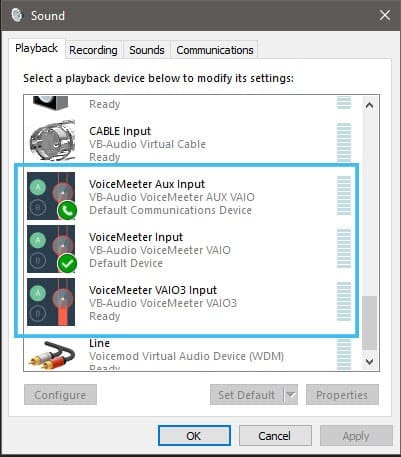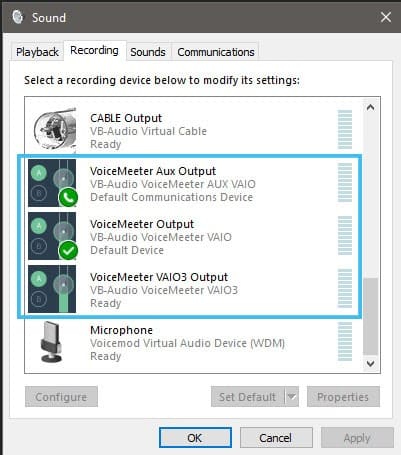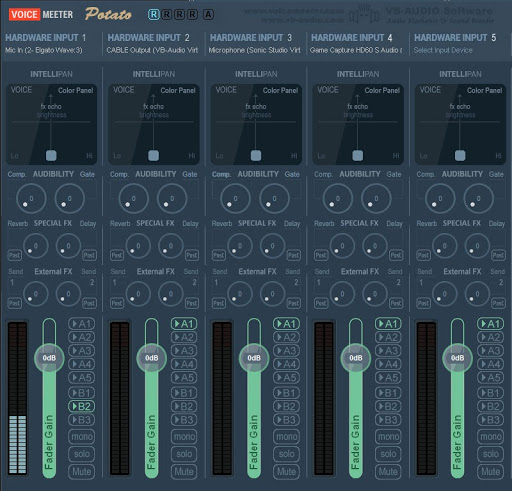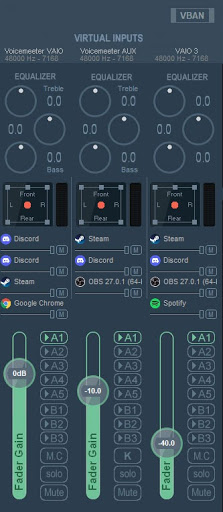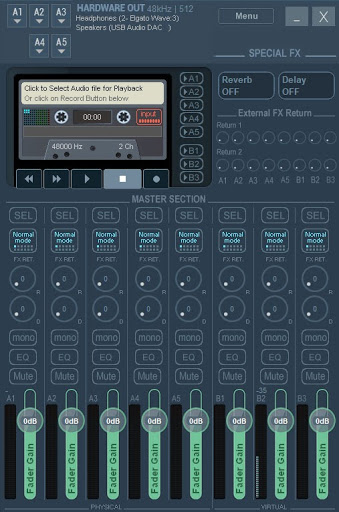VoiceMeeter Potato is donationware created by VB-Audio. It functions as a virtual audio mixer that allows you to control every aspect of your PC’s audio. Potato is larger and more functional when compared to its two smaller cousins, Voice Meeter and VoiceMeeter Banana.
Voice Meeter allows you to control each audio device on your system separately. You can route communication software like Discord and Game chat to one input and game audio and music to other inputs, giving you the freedom to control each sound discreetly. If you’ve ever wondered how some of your favorite streamers can talk to their chats without teammates hearing them or lower their in-game audio on stream while still able to hear it themselves, then look no further.
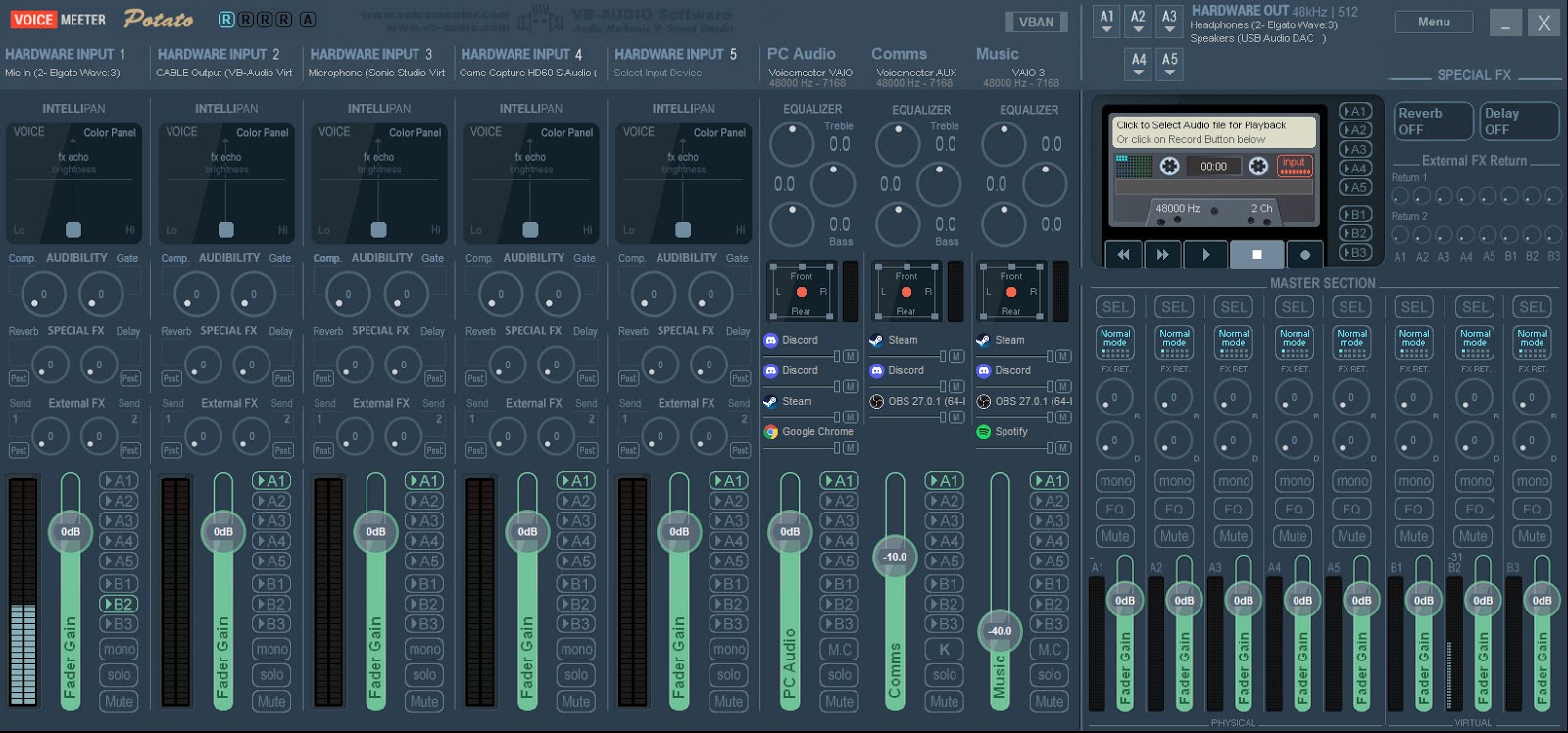
How to Set Up Voicemeeter
You can download VoiceMeeter Potato from Here. You will also need to download and install the Virtual Audio Cable software to have an extra option to route more of your audio. Once they’re downloaded and installed, restart your computer and let’s get them setup!
-
Step 1 – Setup Your Default Playback Devices
First, you should head over to your windows sound settings and set up some defaults for windows. Open the sound control panel by hitting the windows key and typing in sounds, or by right clicking the volume icon in the taskbar and selecting sounds.
Click on the playback tab and scroll down to the VoiceMeeter Input, right click, and select “Set as Default Device”. Next, we’ll right click the VoiceMeeter Aux Input and select “Set as Default Communication Device.”
-
Step 2 – Setup Your Default Recording Devices
We’ll head over to the Recording tab and do the same. Right-click the VoiceMeeter Output and select “Set as Default Device” and right-click the VoiceMeeter Aux Output and select “Set as Default Communication Device”. Now Windows knows where to send it’s default desktop audio and where the communications audio should be sent, we can close this window.
Now we can open VoiceMeeter Potato and look at some of its features. The UI is divided into sections, the far left is Hardware Inputs. This section is where we’ll set up any hardware devices that we have as well as the virtual audio cable that we downloaded.
The center section is the virtual audio inputs, here we’ll route our pc audio, communications audio, and music. The far right is where the audio outputs are, the top section is the hardware outputs such as headphones or speakers and the bottom is the master output section where we can send all our inputs to.
-
Step 3 – Assign Hardware Inputs
Under the Hardware input section, you can right click to rename each input and left click to select what device you want routed there. So right-click Hardware Input 1 and name it Microphone, then left-click and select your microphone from the list, I would suggest sticking with WDM as these are the drivers with the lowest latency for Windows.
Do the same for Hardware Input 2 but select the virtual audio cable. This can be used for a few different sources like Chrome or other web browsers, or any other application that outputs sound, but I would suggest sending your game audio here so you can control this separately for your stream and yourself.
-
Step 4 – Assign Virtual Inputs
Next, we’ll deal with the virtual audio inputs. Right click virtual input 1 and name this PC Audio, this is where windows will send all its sound by default (the one we set up earlier in the sound control panel). Virtual Input 2 we’ll rename to Communication, this is where we told Windows to send all our communication traffic, so Discord, Zoom, Skype, and even most in-game chat will get sent here automatically. Lastly, rename Virtual Input 3 to Music, this is where we will send apps like Spotify, Chrome, and other sources that you can use for music.
-
Step 5 – Select Hardware Outputs
Now we can set up our Hardware outputs. Near the top right of the app, you will see “Hardware Out” and A1 through A5. Click A1 and select your headphones, now every input that has A1 selected under it will output to your headphones. If you have speakers or anything else that plays audio you can select it here under A2 through A5.
Make sure that you have A1 selected under every input except for your mic, which will be sent to B2, and you should be able to hear all your devices now.
-
Step 6 – Route each applications audio to the correct input
The last thing that you need to do is route specific applications to the correct Voice Meeter input. So, make sure that whichever application that you want to route is open and playing audio of some kind. Open the sound settings menu by pressing the windows key and typing sound settings or right click on the volume icon in the task bar and click sound settings. Now scroll to the bottom and click on “Advanced Sound Options”. Here you can change the default output of each application, for example, if you use Spotify, make sure that it is open and playing audio, it will show up on the list here. Change the output to Voice Meeter VAIO3 input, and now Spotify will send its audio to that virtual input in Voice Meeter.
Voicemeeter Features and Options
Now that you have VoiceMeeter setup, you can control each audio source independently to get the best mix while you stream and play games. When it comes to setting up OBS, just keep in mind that you can now add each of these inputs as their own audio output source for any of your scenes, and OBS will control the volume that your stream hears whereas Voice Meeter will control the volume that you hear.
Frequently Asked Questions
-
Subheading
Lorem ipsum dolor sit amet

Tony
Tony, also known as Anubys, is a Twitch streamer and aspiring Youtuber from Toronto Canada. He is completing a degree in IT from York University, and enjoys combining his technical background with his love for video games to make awesome videos and great-looking streams! When he's not busy with coding for school or taking care of his two young children, you can most likely find him in Verdansk going for another Battle Royal victory!


